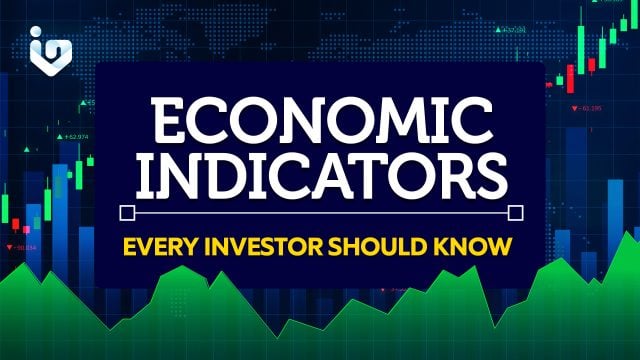Navigating the financial markets requires a compass. For investors, economic indicators serve as this compass, offering insights into the health and direction of the economy. This article explores key economic indicators that are essential for every investor’s toolkit, helping you understand the signals they send.
Gross Domestic Product: The Economy’s Scorecard
Gross Domestic Product (GDP) measures the total value of goods and services produced. It’s the broadest indicator of economic activity. A rising GDP suggests a growing economy, often leading to higher corporate earnings and potentially rising stock prices. Conversely, a contracting GDP can signal a recession, prompting investors to be more cautious.
Unemployment Rate: The Workforce Barometer
The unemployment rate tracks the percentage of the labor force that is jobless and actively seeking employment. Low unemployment typically indicates a robust economy, which can translate into higher consumer spending and corporate profits. High unemployment, however, may suggest economic trouble, affecting consumer confidence and spending patterns.
Consumer Price Index: Inflation’s Thermometer
The Consumer Price Index (CPI) measures the change in prices paid by consumers for goods and services. It’s a key gauge of inflation. Rising CPI can erode purchasing power and affect interest rates, influencing stock and bond markets. Investors watch CPI closely to anticipate inflationary pressures and adjust their portfolios accordingly.
Interest Rates: The Cost of Money
Interest rates, set by central banks, influence the cost of borrowing money. Low-interest rates can stimulate economic growth by making loans cheaper, benefiting stocks, especially those of companies with high debt levels. High-interest rates can slow economic activity and are closely watched by bond investors, as they affect bond yields and prices.
Manufacturing Data: The Industry Pulse
Manufacturing data, such as the Purchasing Managers’ Index (PMI), provides insight into the health of the manufacturing sector. A PMI above 50 indicates expansion, which can be positive for stock prices, reflecting strong industrial activity. Below 50, it suggests contraction, which may lead to caution among investors.
Retail Sales: Consumer Spending Snapshot
Retail sales track consumer spending, a major component of the economy. Strong retail sales often lead to optimism about economic growth and can boost stocks related to consumer goods. Weak sales can raise concerns about economic health, potentially impacting the stock market negatively.
Housing Market Data: The Foundation of Growth
Housing market indicators, such as housing starts and home sales, reflect the strength of the real estate sector. A healthy housing market can signal consumer confidence and spending, supporting related industries and the broader economy. A weak housing market can be a red flag for investors, indicating potential economic slowdowns.
Trade Balance: The Scale of Commerce
The trade balance measures the difference between a country’s exports and imports. A trade surplus can be a sign of economic strength, supporting the domestic currency and stock market. A trade deficit, however, may raise concerns about competitiveness and the strength of the currency.
Conclusion
Economic indicators are the signals that help investors navigate the complex financial landscape. By understanding what these indicators represent and how they can affect the markets, investors can make more informed decisions. Keeping a close eye on these indicators can provide the foresight needed to manage investments proactively, adapting to the ever-changing economic environment.

